Given a M * N grid and location of two players p1 and p2on grid. There are n balls placed on different positions on the grid. Let the location of these balls be B(1), B(2), B(3) ..., B(n).
We need to calculate the minumum manhattan distance required to pick all the balls. Balls should be picked in ascending order i.e if B(i) is picked before B(j) if i < j.
Consider the following sample case:
p1 = (1, 1)
p2 = (3, 4)
Lets consider location of balls as
B(1) = (1, 1), B(2) = (2, 1), B(3) = (3, 1), B(4) = (5, 5)
Output will be 5 because p1 will first choose B(1), B(2), B(3) and p1 will choose B(4)
My Approach
I did a greedy approach and calculated distance of p1 and p2 from a given ball B(i) (starting from i = 1 to n) and added the minimum to the output and updated the position of the player accordingly.
But this approach fails for a lot of testcases.
P.S: This question was asked in one of my past interviews and O(n) solution to this problem is expected.
Edit: More testcases can be like
p1 = (1,1) p2 = (3,5)
B(1) = (3, 3), B(2) = (1, 1), B(3) = (4, 5), B(4) = (2, 1), B(5) = (4, 3).
In this case p1 will choose B(2), B(4)
and p2 will choose B(1), B(3), B(5)
Output will be 8.
p1 = (1,1) p2 = (3,4)
B(1) = (2, 2), B(2) = (3, 2), B(3) = (4, 2), B(4) = (1, 1)
In this case p1 will choose B(4)
and p2 will choose B(1), B(2), B(3)
Output will be 5.
Note: When player chooses a ball he moves to that point.
P.P.S. After discussion I believe no linear-time solution exists to this problem and O(n^2) solution is the best solution available.
